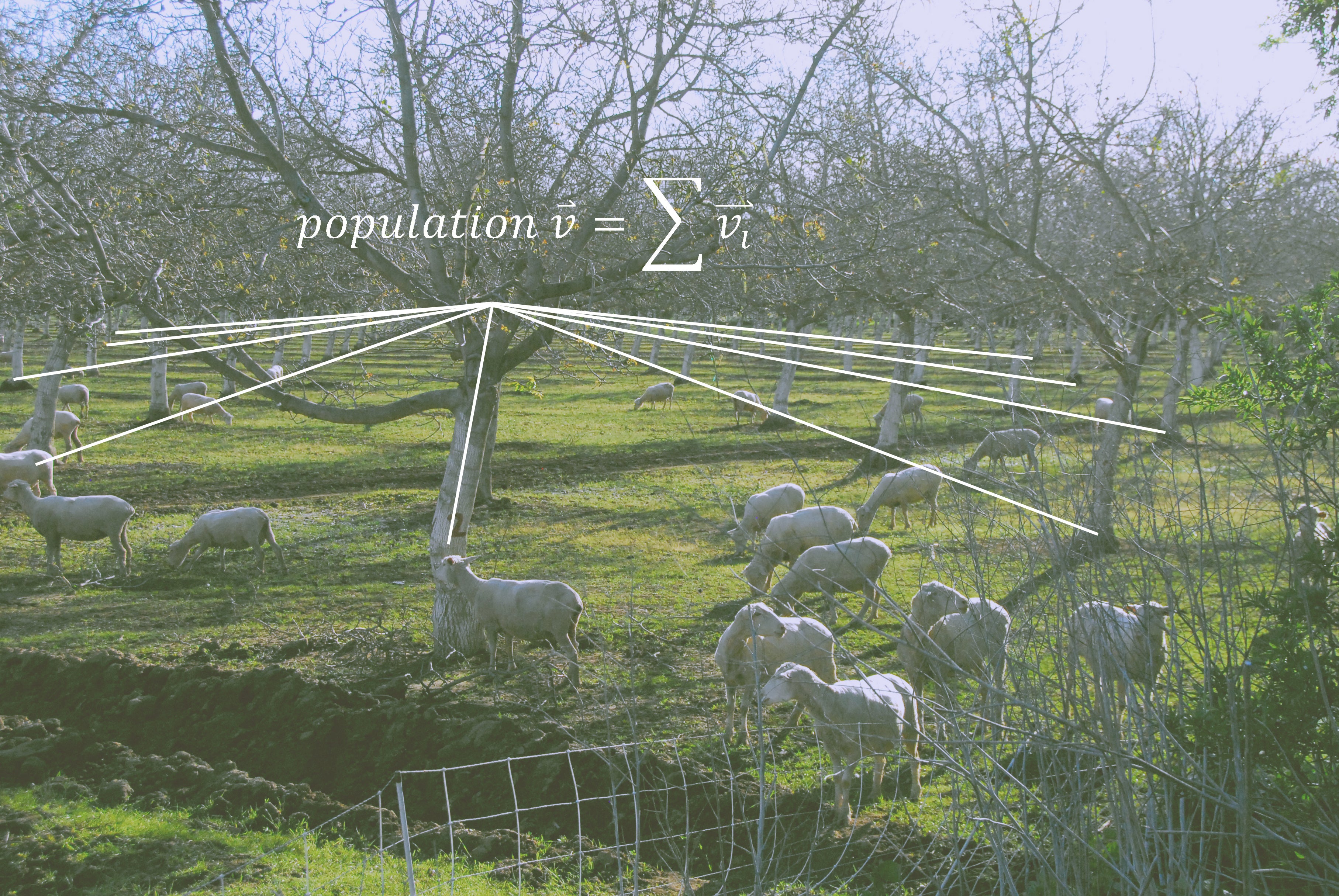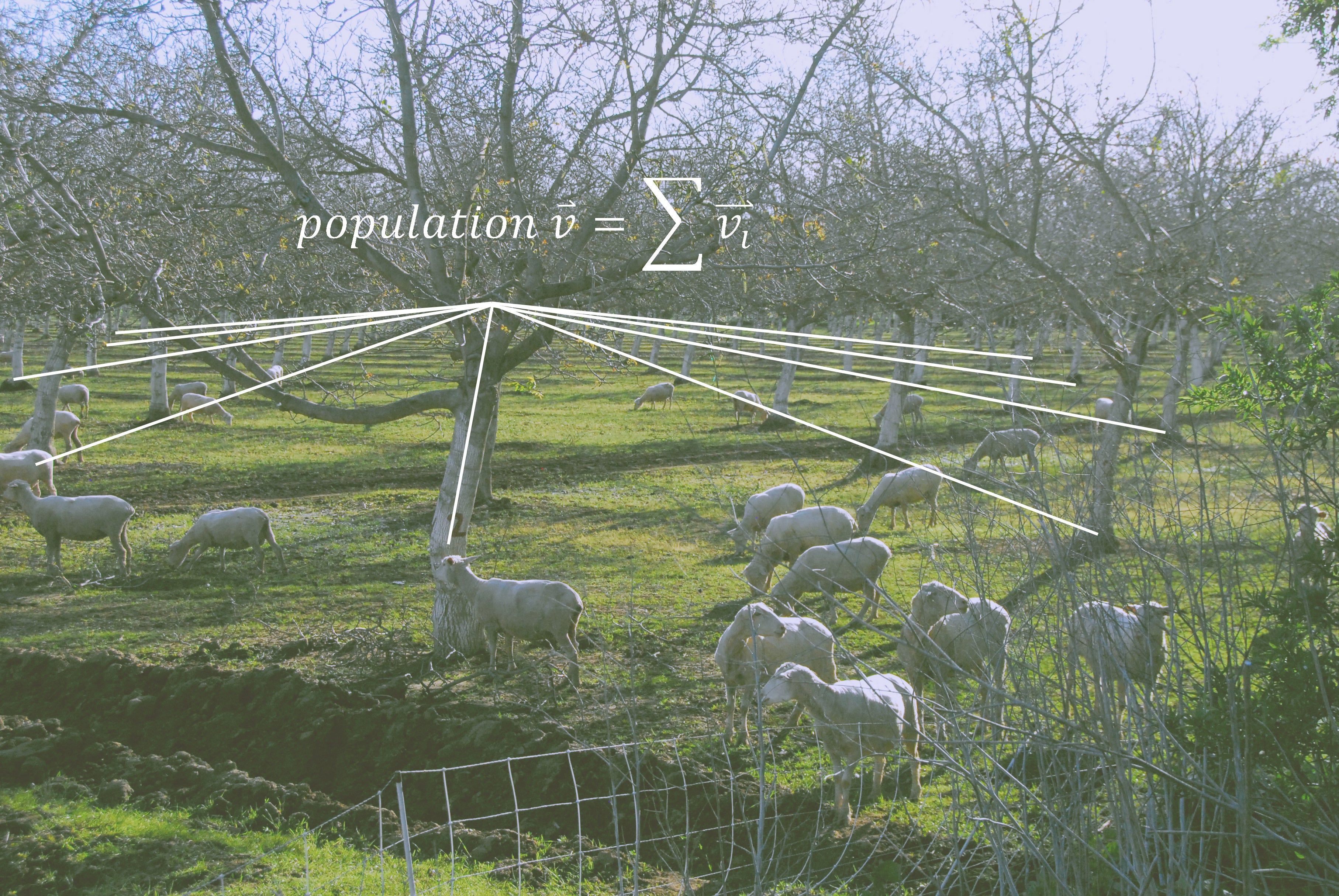By Jennifer Jahncke, Psychology ’14
Something we talk about a lot in neuroscience in terms of topics like visual perception and locomotion is population vectors. A population vector is the sum of each component vector. In this image, with the trees converging to a vanishing point, the population vector would be the vector in the center of the cluster (though not quite to scale; in reality it would have a larger magnitude).
In the context of locomotion, population vectors are important. The way the brain tells the body which direction to move in is through a population vector. There are a lot of neurons each firing telling us to move in their preferred direction, but we can’t move in so many directions at once. So our motor cortex sums up each of the desired vectors of motion and we move in the direction of the resultant population vector.The neuron that fires the strongest will have the most pull over which direction we move in, but all of the neurons have some contribution (however small). Those neurons are like us humans: we may be insignificant individually, but we all contribute to something bigger. The outcome would be different if even one of the vectors was changed or removed.
Click for full size


